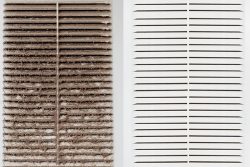Understanding the Importance of Ventilation in Maintaining Healthy Indoor Air
March 8, 2024 3:44 pm Leave your thoughts
The Role of Ventilation in Indoor Air Quality
Ventilation refers to the process of exchanging indoor air with outdoor air to ensure that the indoor environment remains fresh and healthy. Without adequate ventilation, indoor air can become stagnant, leading to a buildup of pollutants such as dust, allergens, mold spores, and volatile organic compounds (VOCs). These pollutants can have adverse health effects, including respiratory issues, allergies, headaches, and fatigue. Proper ventilation helps to remove these contaminants from the indoor environment, creating a healthier and more breathable space.
Benefits of Good Ventilation
1. Removal of Indoor Air Pollutants
One of the primary benefits of ventilation is the removal of indoor air pollutants. By bringing in fresh outdoor air and exhausting stale indoor air, ventilation helps to dilute and remove harmful contaminants from the indoor environment. This includes dust, allergens, pet dander, mold spores, VOCs from cleaning products, and cooking fumes. Proper ventilation can significantly reduce the levels of indoor air pollutants, improving indoor air quality and creating a healthier living or working environment.
2. Prevention of Condensation and Mold Growth
Inadequate ventilation can lead to excess moisture buildup in the indoor environment, which can promote the growth of mold and mildew. Mold thrives in damp, humid conditions and can release spores that cause respiratory symptoms and other health issues. Proper ventilation helps to control moisture levels by expelling humid air and replacing it with drier outdoor air. This can prevent condensation on windows, walls, and ceilings, reducing the risk of mold growth and protecting the structural integrity of the building.
3. Regulation of Indoor Temperature
Ventilation plays a crucial role in regulating indoor temperature and improving thermal comfort. By bringing in fresh outdoor air, ventilation can help to cool the indoor environment during hot weather and provide relief from stuffiness and heat. In colder months, proper ventilation can help to remove excess moisture and prevent condensation on windows, which can lead to drafts and heat loss. By maintaining a comfortable temperature and humidity level, ventilation contributes to a more pleasant and enjoyable indoor environment.
4. Improved Health and Well-Being
Good ventilation is essential for supporting the health and well-being of occupants in a building. Poor indoor air quality can exacerbate respiratory conditions such as asthma and allergies, leading to symptoms such as coughing, wheezing, and congestion. Adequate ventilation helps to reduce the concentration of indoor air pollutants, creating a healthier and more breathable indoor environment. Good indoor air quality has been linked to improved productivity, cognitive function, and overall well-being, highlighting the importance of ventilation in creating a healthy living or working space.
Types of Ventilation Systems
There are various types of ventilation systems that can be used to maintain healthy indoor air. Some common ventilation systems include:
1. Natural Ventilation: Natural ventilation relies on openings such as windows, doors, and vents to allow fresh outdoor air to enter the indoor space and expel stale indoor air. This passive ventilation method is energy-efficient and cost-effective, but may not always provide consistent airflow or adequate ventilation levels.
2. Mechanical Ventilation: Mechanical ventilation systems use fans and ductwork to circulate air and remove indoor pollutants. There are different types of mechanical ventilation systems, including exhaust ventilation, supply ventilation, and balanced ventilation. These systems can be customized to meet the specific ventilation needs of a building and ensure optimal indoor air quality.
3. Heat Recovery Ventilation (HRV) and Energy Recovery Ventilation (ERV): HRV and ERV systems are designed to recover heat or energy from the exhaust air before it is expelled from the building. These systems transfer heat or coolness from the outgoing air to the incoming air, to improve energy efficiency and maintain indoor comfort levels. HRV and ERV systems are particularly suitable for buildings with high ventilation requirements or strict energy efficiency standards.
Summary
Ventilation plays a vital role in maintaining healthy indoor air quality and promoting the well-being of occupants. Proper ventilation helps to remove indoor air pollutants, prevent mold growth, regulate indoor temperature, and support overall health and comfort. By understanding the importance of ventilation and implementing appropriate ventilation systems, building owners and occupants can create a safe, healthy, and enjoyable indoor environment. Prioritizing ventilation in building design and maintenance can have long-lasting benefits for occupants and contribute to a healthier, more sustainable future.
Need Biohazard Consulting in Basalt, CO?
Welcome to HealthSafe Inspections, Inc.! We are a locally owned and operated business that provides quality services to customers in Aspen and the surrounding cities. With over 35 years of experience in the industry, we strive to maintain the friendly and trustworthy reputation that we have built. HealthSafe Inspections, Inc. is an indoor environmental consulting firm. Our services include on-site investigation and sampling, report writing, recommendations, and post-remediation verification. After an initial consultation, we are able to determine what is needed. We also consult and test for several indoor contaminants, such as allergens, asbestos, bacteria, mold and fungus, radon gas, and more. Contact us today to learn more about what we can do for you!
Categorised in: Indoor Air Quality
This post was written by admin
